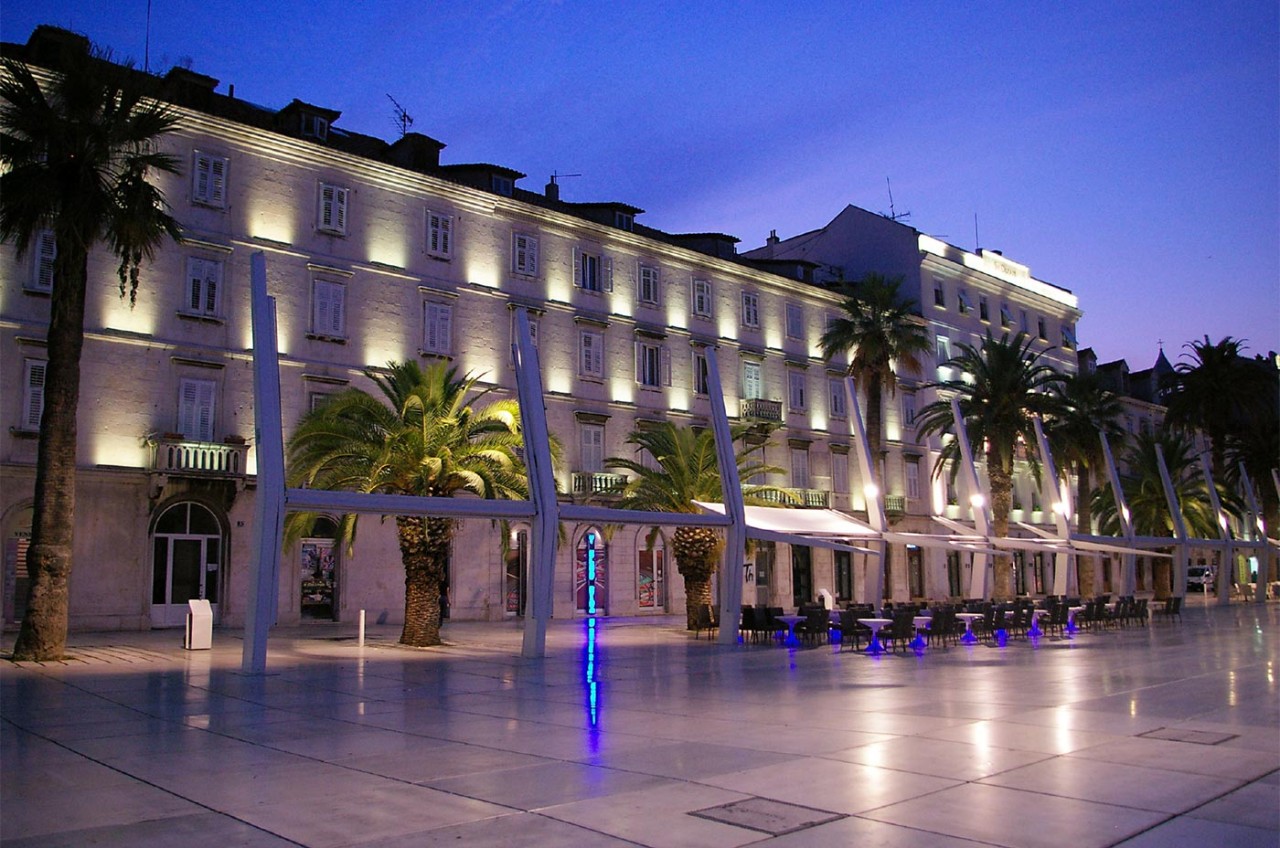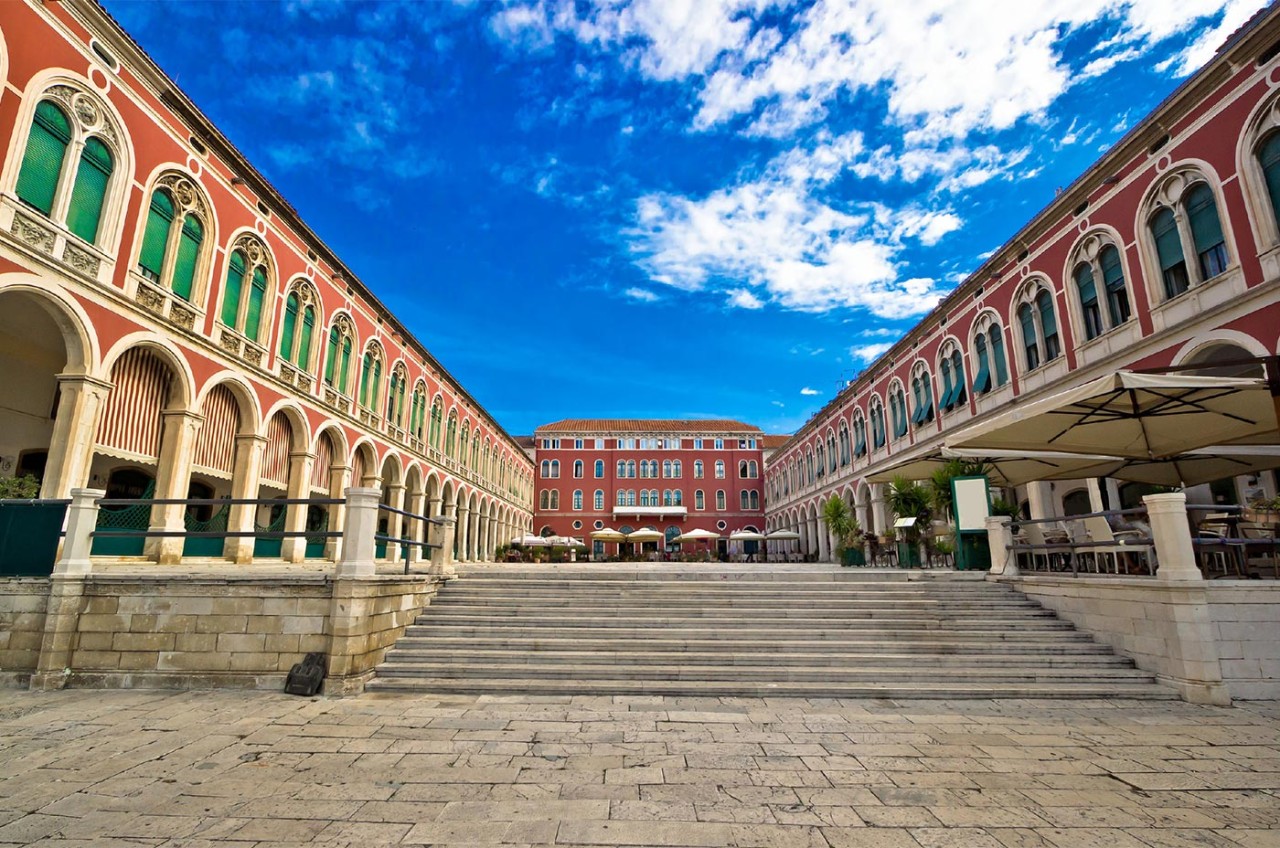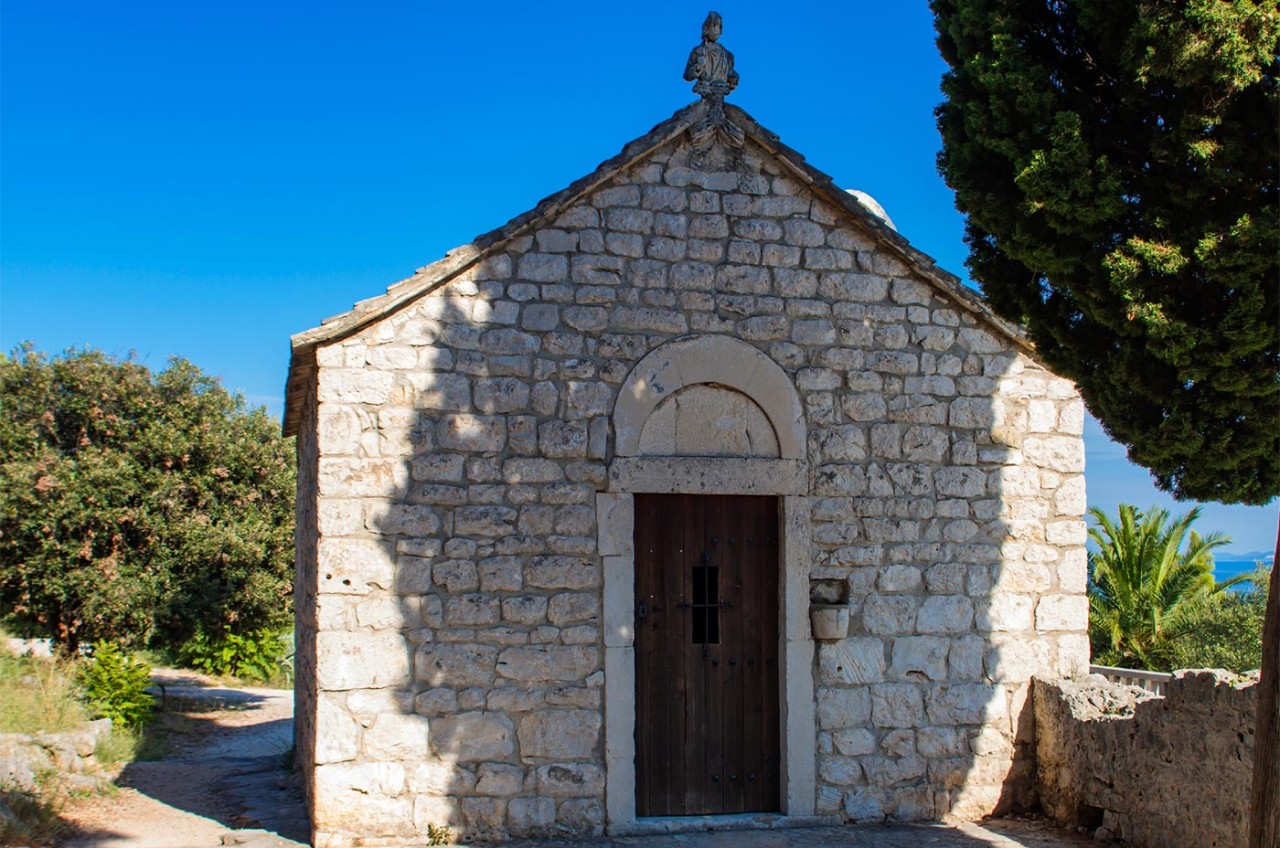Split Is A Must-Visit Croatia's Destinations!
Split, Croatia's second-largest city and a stunning coastline location, is a bustling city. Diocletian's Palace, a UNESCO World Heritage Site, is only one of the many cultural landmarks in Split that attest to the city's extensive past.
The city is recognized for its breathtaking coastline, which has clear waters and lovely beaches. With a variety of bars, clubs, and restaurants to suit all interests and budgets, Split's nightlife is another big magnet for tourists.
Split is a must-visit location for everyone hoping to enjoy Croatia's natural beauty and rich cultural heritage.
Split is also a great starting point for private and shared boat excursions as well as hop-on, hop-off speedboat tours to explore the Adriatic Sea and its stunning islands.
Blue Shark Tours And Transfers provide half-day to full-day boat tours and excursions departing from Split. These excursions typically transport tourists to nearby islands like Brac, Hvar, and Vis, where they can take advantage of swimming, tanning, and discovering the local landmarks and culture. Some excursions also include stops at distant coves like Blue Cave on Bisevo island, and beaches like Stiniva Beach that can only be reached by boat.
Private boat tours are also available, which offer more flexibility and customization options. Visitors can rent a private boat and tailor their itinerary to their preferences, choosing which islands and beaches to visit and how much time to spend at each location.
Who Are Split's Visitors?
Split has traditionally drawn visitors from almost every European country, as well as the rest of the world. There are many visitors from Germany, the United Kingdom, the United States, France, and other countries like Scandinavian countries . In addition to Croatian visitors, Split is home to Slovenes and citizens from other Central European and Eastern European countries, including Poland, the Czech Republic, and Slovakia.
Croatia is currently receiving tourists from all over the world, and the borders are open to a well-intentioned tourist. In Croatia, there were 18.9 million arrivals and 104.8 million overnight stays.
Split Attractions:
Learn more about the top Split attractions that bring so many tourists each year in the content listed below.
Diocletian's Palace
Diocletian's Palace, Split's most culturally significant tourist attraction, was constructed during the rule of Emperor Diocletian, a Roman ruler regarded as an oppressor of Catholics. He spent his twilight years in his luxurious mansion.
The palace is situated in the heart of Split. While it is labeled a "Palace," it is more of a large tower surrounded by Split's walls and towers. Peristyle is regarded as not just Split's most beautiful square, but also one of the most beautiful in Croatia and even Europe.
Golden Gate
The Golden Gate, the most beautiful entrance to Diocletian's Palace, and it is almost completely preserved. The monument of Grgur Ninski, at the Golden Gate, is the masterpiece of Ivan Metrovic, Croatia's most famous sculptor.
Grgur Ninski was a medieval bishop who advocated for vernacular religion. As a result, he is honored and celebrated as a Croatian folk hero.
Juraj Dalmatinac created the masterpiece that is known as the Papalic Palace during the Gothic-Renaissance period. Currently, it is the place where the Museum of Split is situated.
Split Riva ( Split Waterfront )
Split's waterfront is the most widely recognized promenade in the city and internationally. The Riva holds a special place in Split's heart. Here is where the most important political, social, and recreational activities take place.
It's also a top location for romantic walks, first loves, and mingling. Looking around, you'll notice people on the waterfront enjoying a casual atmosphere in true Mediterranean spirit.
You can get ice cream or pancakes after a walk around the shore, it's also a good idea to have your favorite drink while sitting at one of the many cafés along the sun and sea.
Every year on May 7, Split celebrates the patron saint of the city, St. Duje, with the finest waterfront feast. The celebration lasts all day, beginning with a morning church mass with Croatian bishops and ending with an evening entertainment program and concerts by famous Split performers.
Split's Riva waterfront is a popular starting point for speedboat trips to the Dalmatian islands and other coastal destinations.
Riva is a promenade that stretches along the waterfront in the heart of Split, offering stunning views of the Adriatic Sea and the nearby islands. From here, visitors can book a variety of boat tours and excursions, including half-day and full-day trips.
Marmont Street And Prokurative Square
Another interesting Split street is Marmont Street, which runs between Split's HNK and the Split Riva. It was named after Napoleon's General Marmont, which is a significant fact considering that Napoleon and Marmont occupied Split.
Despite this, the people of Split adored him because he contributed significantly to the city's architecture and progress as a municipal manager. As a result, this lovely street was named after the French occupying general.
Marmont was also in control of the architecture of the Prokurative, a square reminiscent of St. Mark's Square in Venice. The square is positioned between the start of Marmont Street on the waterfront and the St. Francis monastery on the waterfront.
Various renowned events are held on the Prokurative Square, including the Split Festival of Entertainment Music, which takes place every year at the beginning of the summer and brings together Croatia's greatest singers of mainstream music.
Sustipan Peninsula
Sustipan (or St. Stephen's Peninsula) is located near the western coast of the Zvoncac area. Sustipan had a Benedictine monastery and church in the Middle Ages. One of Croatia's most beautiful cemeteries was established in the nineteenth century. Regrettably, the cemetery was destroyed by Communist authorities in the 20th century in a bid to deliver a blow against the Split civic layer.
Sustipan is now a gorgeous park, ideal for socializing and romantic outings.
Split Food Market
Split has a vibrant food market, which is located in the heart of the city and is a must-visit destination for foodies and travelers looking to experience the local culture and cuisine.
The market, which is officially known as Pazar, is open daily and is a bustling hub of activity. Visitors can browse through a wide range of fresh produce, including fruits, vegetables, herbs, and spices, as well as local specialties such as olive oil, cheese, cured meats, and fish.
In addition to the food stalls, Pazar also has a section dedicated to clothing and textiles, as well as a flea market area where visitors can find unique souvenirs and antiques.
One of the highlights of Pazar is the atmosphere, which is lively and energetic. Local vendors are friendly and passionate about their products, and visitors can engage with them and learn more about the local ingredients and cuisine.
For those interested in trying local food, there are also several food stalls and small eateries scattered throughout the market, offering traditional dishes.
Overall, Split's food market is a must-visit destination for anyone looking to experience the local culture and cuisine. Whether you're a foodie or just looking for a unique cultural experience, Pazar is a great spot to immerse yourself in the sights, sounds, and flavors of Split.
Marjan Hill, Peninsula And Forest Park
Marjan hill is a Split breathtaking natural landmark. On a peninsula covered in a thick forest known as the Marjan Forest Park, there is a hill that rises 178 meters above sea level. Both tourists and locals enjoy visiting the Marjan peninsula because it has stunning views of the city and the Adriatic Sea.
Approximately 3.5 square kilometers of the Marjan Forest Park are designated as a protected nature reserve. There are many hiking and biking trails in the park, as well as a number of beaches and picnic areas. The forest is a well-liked destination for nature lovers because it is home to a wide range of plant and animal species.
Visitors can find the Telegrin Tower, which provides expansive views of the city and the sea, at the summit of Marjan hill. The tower was initially a telegraph station when it was constructed in the 19th century. Today, it is a well-liked tourist destination that provides some of the city's best views.
Marjan in the past was known for being the residence of hermits. It's not a miracle why Marjan is almost completely naturally preserved today. Marjan is currently a popular destination for recreation, vacations, sporting activities, and running, and the Marjan beaches of Kasjuni, Bene, and Kastelet are well known.
Overall, anyone visiting Split, Croatia should make a point of visiting Marjan Hill and the Marjan Forest Park. Marjan has something to offer everyone, whether you're looking for a strenuous hike, a tranquil picnic, or just breathtaking views.
Split Beaches
Split's beaches are genuine diamonds that, along with the Diocletian's Palace, serve as the city's most potent draw for tourists. Among the most well-known beaches are Bacvice, Kasjuni, Bene, Firule, Znjan, and Kastelet. Today we will intruduce the most popular beach, the Bacvice beach. However, we will introduce you to all of the most famed Split and Dalmatian beaches in a separate blog.
Bacvice Beach, The Most Famous Split Beach
Bacvice Beach is one of the most popular beaches in Split, Croatia, and is located just a short walk from the city center. This sandy beach is known for its crystal-clear waters and lively atmosphere, and is a popular destination for locals and tourists alike.
Bacvice Beach is known for its shallow waters, making it a great spot for swimming and water sports. The beach is also surrounded by several beach bars and restaurants, where visitors can enjoy refreshing drinks and traditional Croatian cuisine.
The Bacvice Beach is well-known for "Picigin", a UNESCO intangible cultural heritage game.
Picigin, a traditional ball game played in the shallow waters, is one of Bacvice Beach's distinguishing features. The game entails keeping a small ball in the air with only your hands and feet, and it is a popular pastime among locals. The players are battling it out with acrobatics. The ball must not end up in the sea. The goal of a game is to keep the ball in the air for as long as possible.
Bacvice Beach is a short walk from Split's city center and is a great place to cool off on a hot summer day. The beach is also close to a number of other popular attractions, such as Diocletian's Palace and the Riva promenade.
Events In Split
Split Summer is the most well-known cultural event in Split, taking place every year in July and August. It includes a variety of theatrical plays, musical concerts, and art exhibitions. The program is held in a variety of settings, including HNK, Sustipan, and Peristyle.
Ultra Europe Festival is one of Europe's largest music festivals, taking place in Split in July.
The Ultra Europe festival attracts thousands of visitors to Split every year, and the Park Mladezi stadium provides the perfect setting for the high-energy event. The stadium's large capacity and state-of-the-art sound and lighting systems create an unforgettable experience for festival-goers.
The Solin Summer Manifestation is similar to Split Summer, but with lower-cost maps and a greater number of free activities.
Finally, Split is a fantastic tourist destination that has something for everyone. This vibrant city has plenty to explore and discover, from its stunning coastline and crystal-clear waters to its rich history and cultural landmarks of town, and Dalmatia islands and coast.













Comments